Dangerous North American Animals
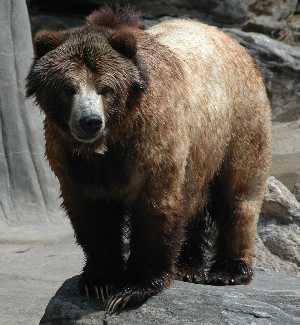
Animal: Grizzly Bear (Brown Bear)
Location: United States & Canada
Size: 400-800 lbs
Speed: 35 mph
Food Source: Moose, deer, sheep, elk, fish, & sometimes humans
Defense Tactics: Keep campsites clean and hang your food up in trees, out of the bear's reach. Try not to startle or surprise them and
always keep a good distance. Should you encounter one, avoid making direct eye-contact so they don't feel threatened or challenged.
Stand tall, speak softly, and slowly back away. If the bear decides to charge you, stand your ground because often times it
will be a bluff. Try not to run from a bear because they will easily catch and dispose of you. If there are nearby trees, try
climbing up as high as you can since Grizzlies are poor climbers when fully grown. Lastly, if the bear does
start attacking you, either play dead while protecting your neck, or aim your fists at the nose, one of the bear's few sensitive spots.
There are also bear repellants & sprays you can buy for protection.
Fatalities: 1-5 per year
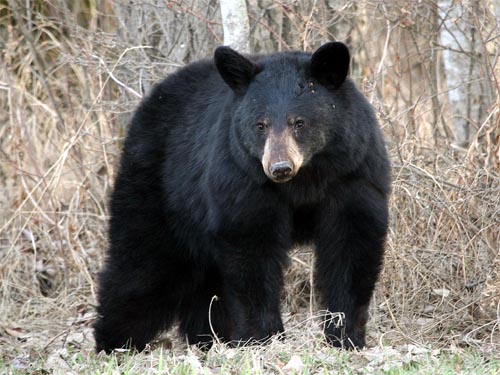
Animal: American Black Bear
Location: United States & Canada
Size: 250-550 lbs
Speed: 25-30 mph
Food Source: Insects, honey, mules, deer, salmon, & occasionally bird eggs
Defense Tactics: Similar defense tactics against brown bears can be applied, however, don't both trying to escape by climbing a tree. Black bears are some of the most versatile climbers on the planet.
Encounters with black bears are largely based on hunger, so be sure to keep food locked up or properly hung from a tree.
Fatalities: 1-5, although they attack humans more often than Grizzly bears
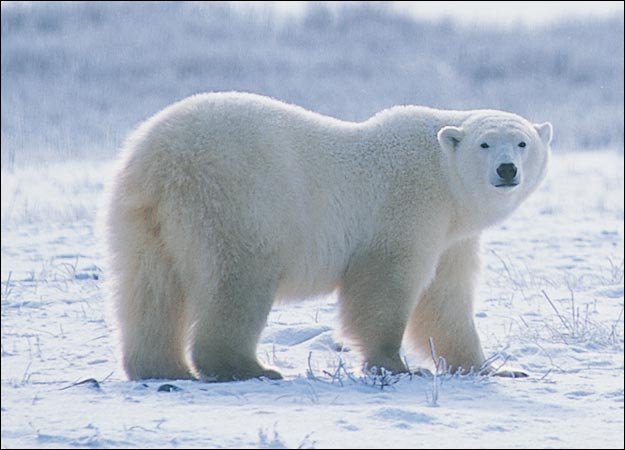
Animal: Polar Bear
Location: United States, Canada, Greenland, & Russia
Size: 800-1,500 lbs
Speed: 25 mph, 6 mph in the water
Food Source: Primarily seals, reindeer, rodents, fish, & muskox
Defense Tactics: Polar bears are not territorial animals and will only attack humans if they are provoked or extremely hungry. They do not fear
humans so it is best to keep a good distance away and assume they are searching for a tasty snack.
Fatalities: 0-3
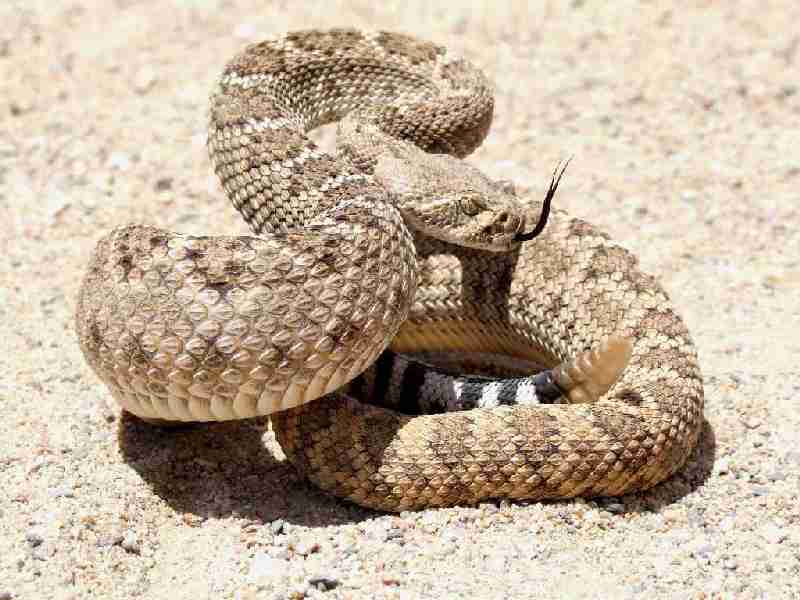
Animal: Western Diamondback Rattlesnake
Location: United States & Mexico
Size: 4-6 feet long
Speed: 8 mph
Food Source: Prairie dogs, rats, gophers, mice, squirrels, rabbits, birds, and lizards
Defense Tactics: Watch where you are walking and be attentive. If your hear a rattling sound, that means there's a rattlesnake
nearby and it is ready to strike. Carry a stick with you and and aim it at the rattlesnake, that way if he strikes at
anything it will probably be the stick. Keep in mind snakes can extend their bite up to 2/3 their length and are too quick
to dodge. Should you ever have to handle one, make sure to hold it by its neck, not tail, so it cannot bite you.
Fatalities: 5-15 per year & over 8,000 snakebites
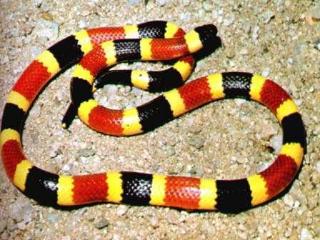
Animal: Coral Snake
Location: United States & Canada
Size: 3-5 feet long
Speed: 8 mph
Food Source: Smaller snakes, lizards, frogs, birds, & rodents
Defense Tactics: The best defense against coral snakes is being able to identify them so that you can steer clear of them. The trick to
identifying coral snakes is simple: "Red next to black, safe from attack. Red next to yellow, you're a dead fellow!" They possess
a strong neurotoxin and there are a reported 15-25 snakebites per year, so they will strike if they feel threatened.
Fatalities: 5-15 per year & over 8,000 snakebites
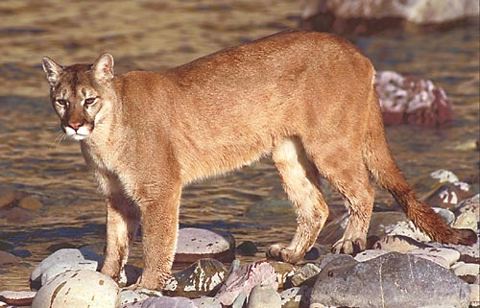
Animal: Mountain Lion (Cougar, Puma)
Location: Western United States, Canada, Mexico, and S. America
Size: 100-200 lbs
Speed: 45 mph
Food Source: Deer, elk, moose, hares, porcupines, & small rodents
Defense Tactics: Stand tall, make lots of noise, stare at them intensely, and throw rocks at them if you feel threated by a mountain
lion. Avoid confronting them if possible and whatever you do, DON'T run or play dead because it may stimulate their instinct to
chase you down and become their next meal. The good news is that human sightings of these wild animals are very uncommon.
Fatalities: 0-5 per year
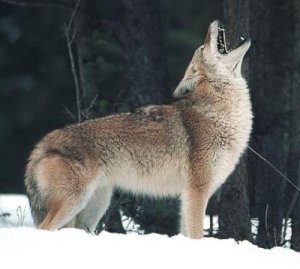
Animal: Coyote
Location: United States, Canada, Mexico, and Central America
Size: 30-50 lbs
Speed: 40 mph
Food Source: Prairie dogs, rabbits, squirrels, mice, birds, snakes, lizards, deer, & livestock
Defense Tactics: Coyotes pose a greater threat to small children, especially those living in California, where people have been known
to feed them. If you do run into a coyote, don't feed it or provoke it in any way, especially since he may not be traveling alone.
Fatalities: 0-5 per year
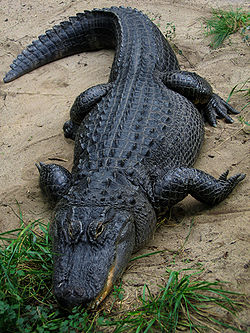
Animal: American Alligator
Location: Southeastern United States [Florida]
Size: 200-1,200 lbs, 8-15 feet long
Speed: 15 mph on land, 20 mph in water
Food Source: Fish, turtles, raccoons, snakes, birds, deer, sheep, frogs, and other amphibians
Defense Tactics: The best defense against these creatures is to keep a good distance. Most often they do not view humans as
prey, but if they feel threatened or if they mistake your foot for a fish, beware. If an alligator latches on to you
and begins the "death roll", you are pretty much out of luck. Your best bet is to jab it in the eye as hard as you can
since that is their most sensitive spot. Don't swim where alligators are suspected to be (bogs and everglades in Florida).
Fatalities: 0-5 per year
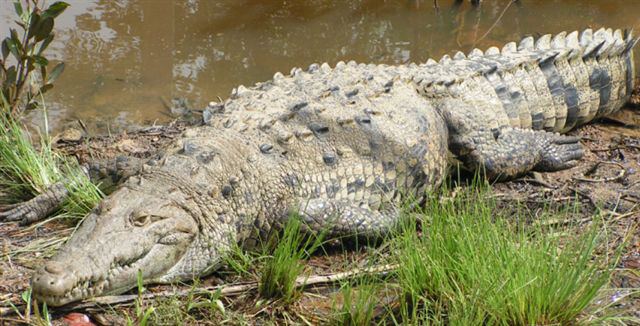
Animal: American Crocodile
Location: Central America & Caribbean Islands
Size: 1,000-2,000 lbs
Speed: 10 mph on land, 20 mph in water
Food Source: Fish, turtles, crabs, snakes, birds, fish, frogs, and other mammals
Defense Tactics: The best defense against crocs is to stay away from them. Usually they do not view humans as
prey, but if they feel threatened or if they mistake your foot for a fish, watch out! If a crocodile does latch on to you
and starts spinning you around with the notorious "death roll", pray that you break free. If all else fails, jab it in the eye as hard as you can,
since that is one of their more sensitive areas. Also, avoid swimming where crocodiles may be lurking.
Fatalities: 0-5 per year
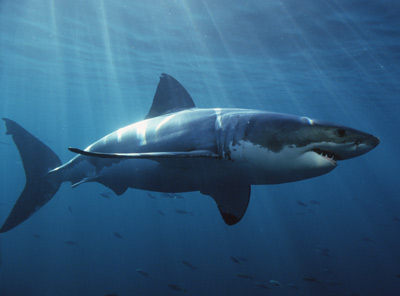
Animal: Great White Shark
Location: Predominantly the Pacific Ocean. Also found in the Atlantic & Indian Ocean.
Size: 12-20 feet long, 2,000-4,000 lbs
Speed: 25 mph
Food Source: Fish, dolphins, smaller sharks, porpoises, seals, sea lions, turtles, penguins, and otters
Defense Tactics: Stay calm, keep an eye on him, attack its gills or eyes (sensitive areas), and carry a wasp knife
with you. Avoid wearing bright colors because it attracts them, and if you are bleeding, exit the water immediately
because they can smell blood from miles away.
Fatalities: 5-15 per year, 50-70 reported attacks
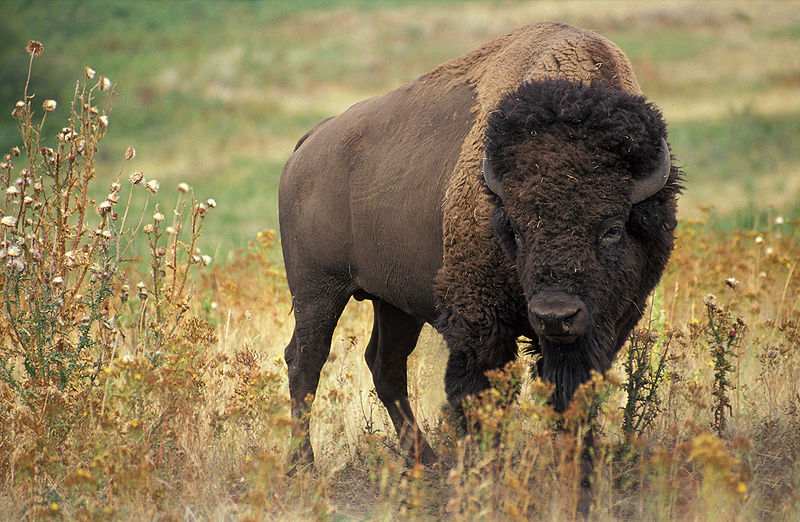
Animal: American Bison (Buffalo)
Location: United States & Canada
Size: 700-2,000 lbs
Speed: 35-40 mph
Food Source: Grass, legumes, cactus, acorns, fruit, corn, and occasionally birds
Defense Tactics: Give them space, don't annoy them, and you should be relatively safe from this animal. They can weight over 2,000 pounds
and run over 40 mph, so don't be fooled by their lethargic movements. If you do see a buffalo charging, try and hide behind a
large tree for protection.
Fatalities: 0-5 per year

Animal: White-Tailed Deer
Location: United States & Canada
Size: 100-300 lbs
Speed: 30 mph
Food Source: Grass, legumes, cactus, acorns, fruit, corn, and occasionally birds
Defense Tactics: Try not to scare them and run away if allowed. They have powerful legs and may start rampantly kicking you,
in which case you should try and curl up into the fetal position until it leaves. Deer are also easily frightened by loud noises,
so if you have something you could make lots of noise with, that could help scare it off.
Fatalities: 0-5 per year, although indirectly (car crashes) they cause 100+ per year
comments powered by DisqusLearn about the dangerous South American animals
